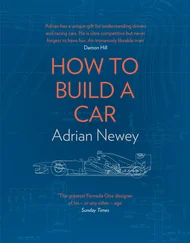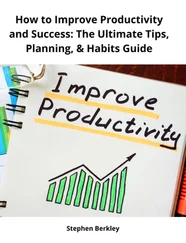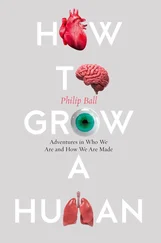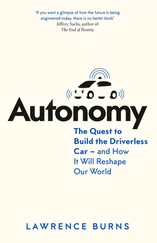Eyal, Nir - Hooked - How to Build Habit-Forming Products
Здесь есть возможность читать онлайн «Eyal, Nir - Hooked - How to Build Habit-Forming Products» весь текст электронной книги совершенно бесплатно (целиком полную версию без сокращений). В некоторых случаях можно слушать аудио, скачать через торрент в формате fb2 и присутствует краткое содержание. Год выпуска: 2014, Издательство: Nir Eyal, Жанр: Старинная литература, на английском языке. Описание произведения, (предисловие) а так же отзывы посетителей доступны на портале библиотеки ЛибКат.
- Название:Hooked: How to Build Habit-Forming Products
- Автор:
- Издательство:Nir Eyal
- Жанр:
- Год:2014
- ISBN:нет данных
- Рейтинг книги:5 / 5. Голосов: 1
-
Избранное:Добавить в избранное
- Отзывы:
-
Ваша оценка:
- 100
- 1
- 2
- 3
- 4
- 5
Hooked: How to Build Habit-Forming Products: краткое содержание, описание и аннотация
Предлагаем к чтению аннотацию, описание, краткое содержание или предисловие (зависит от того, что написал сам автор книги «Hooked: How to Build Habit-Forming Products»). Если вы не нашли необходимую информацию о книге — напишите в комментариях, мы постараемся отыскать её.
Hooked: How to Build Habit-Forming Products — читать онлайн бесплатно полную книгу (весь текст) целиком
Ниже представлен текст книги, разбитый по страницам. Система сохранения места последней прочитанной страницы, позволяет с удобством читать онлайн бесплатно книгу «Hooked: How to Build Habit-Forming Products», без необходимости каждый раз заново искать на чём Вы остановились. Поставьте закладку, и сможете в любой момент перейти на страницу, на которой закончили чтение.
Интервал:
Закладка:
Codecademy seeks to make learning to write code more fun and rewarding. The site offers step-by-step instructions for building a web app, animation, and even a browser-based game. The interactive lessons deliver immediate feedback, in contrast to traditional methods of learning to code by writing whole programs. At Codecademy, users can enter a single correct function and the code works or doesn’t, providing instant feedback.
Learning a new skill is often filled with errors but Codecademy uses the difficulty to its advantage. There is a constant element of the unknown when it comes to completing the task at hand and like a game, users receive variable rewards as they learn — sometimes they succeed, sometimes they fail. But as their competency level improves, users work to advance through levels, mastering the curriculum. Codecademy’s symbols of progression and instantaneous variable feedback tap into rewards of the self, turning a difficult path into an engaging challenge (figure 28).
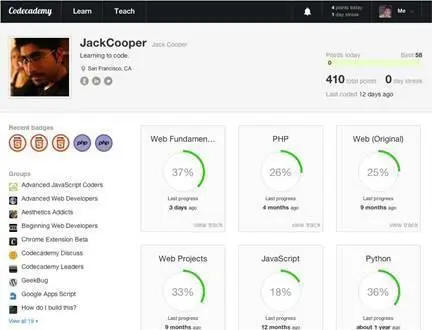
Figure 28
***
Important Considerations for Designing Reward Systems
Variable Rewards Are Not a Free Pass
In May 2007, a site called Mahalo.com was born. A flagship feature of the new site was a question-and-answer forum known as Mahalo Answers. Unlike previous Q&A sites, Mahalo utilized a special incentive to get users to ask and answer questions.
First, people who submitted a question would offer a bounty in the form of a virtual currency known as “Mahalo Dollars.” Then, other users would contribute answers to the question and the best response would receive the bounty, which could be exchanged for real money. By providing a monetary reward, the Mahalo founders believed they could drive user engagement and form new online user habits.
At first, Mahalo garnered significant attention and traffic. At its high point, 14.1 million users worldwide visited the site monthly. [lxxxix]But over time, users began to lose interest. Although the payout of the bounties were variable, somehow users did not find the monetary rewards enticing enough.
But as Mahalo struggled to retain users, another Q&A site began to boom. Quora, launched in 2010 by two former Facebook employees, quickly grew in popularity. Unlike Mahalo, Quora did not offer a single cent to anyone answering user questions. Why, then, have users stayed highly engaged with Quora, but not with Mahalo, despite its variable monetary rewards?
In Mahalo’s case, executives assumed that paying users would drive repeat engagement with the site. After all, people like money, right? Unfortunately, Mahalo had an incomplete understanding of its users’ drivers.
Ultimately, the company found that people did not want to use a Q&A site to make money. If the trigger was a desire for monetary rewards, the user was better off spending their time earning an hourly wage. And if the payouts were meant to take the form of a game, like a slot machine, then the rewards came far too infrequently and were too small to matter.
However, Quora demonstrated that social rewards and the variable reinforcement of recognition from peers proved to be much more frequent and salient motivators. Quora instituted an upvoting system that reports user satisfaction with answers and provides a steady stream of social feedback. Quora’s social rewards have proven more attractive than Mahalo’s monetary rewards.
Only by understanding what truly matters to users can a company correctly match the right variable reward to their intended behavior.
Recently, “gamification” — defined as the use of game-like elements in non-gaming environments — has been used with varying success. Points, badges, and leaderboards can prove effective, but only if they scratch the user’s itch. When there is a mismatch between the customer’s problem and the company’s assumed solution, no amount of gamification will help spur engagement. Likewise, if the user has no ongoing itch at all — say, no need to return repeatedly to a site that lacks any value beyond the initial visit — gamification will fail because of a lack of inherent interest in the product or service offered. In other words, gamification is not a one-size-fits-all solution for driving user engagement.
Variable rewards are not magic fairy dust that a product designer can sprinkle onto a product to make it instantly more attractive. Rewards must fit into the narrative of why the product is used and align with the user's internal triggers and motivations.
Maintain a Sense of Autonomy
Quora found success by connecting the right reward to the intended behavior of asking and answering questions. But in August 2012, the company committed a very public blunder — one that illustrates another important consideration when using variable rewards.
In an effort to increase user engagement, Quora introduced a new feature called “views,” which revealed the real identity of people visiting a particular question or answer. For users, the feedback of knowing who was seeing content they added to the site proved very intriguing. Users could now know, for example, when a celebrity or prominent venture capital investor viewed something they created.
However, the feature ultimately backfired. Quora automatically opted users into the new feature without alerting them that their browsing history on the site would be exposed to others. In an instant, users lost their treasured anonymity when asking, answering, or simply viewing Quora questions that were personal, awkward, or intimate. [xc]The move sparked a user revolt and Quora reversed course a few weeks later, making the feature explicitly opt-in. [xci]
In the case of Quora, the change felt forced and bordered on coercion. While influencing behavior can be a part of good product design, heavy-handed efforts can have adverse consequences and risk losing users’ trust.
We’ll address the morality of manipulation in a later chapter — but aside from the ethical considerations, there is an important point regarding the psychological role of autonomy and how it can impact user engagement.
As part of a French study, researchers wanted to know if they could influence how much money people handed to a total stranger asking for bus fare by using just a few specially encoded words. They discovered a technique so simple and effective it doubled the amount people gave.
The turn of phrase has not only proven to increase how much bus fare people give, but has also been effective in boosting charitable donations and participation in voluntary surveys. In fact, a recent meta-analysis of 42 studies involving over 22,000 participants concluded that these few words, placed at the end of a request, are a highly-effective way to gain compliance, doubling the likelihood of people saying “yes.” [xcii]
The magic words the researchers discovered? The phrase, “but you are free to accept or refuse.”
The “but you are free” technique demonstrates how we are more likely to be persuaded when our ability to choose is reaffirmed. Not only was the effect observed during face-to-face interactions, but also over email. Although the research did not directly look at how products and services might use the technique, the study provides an important insight into how companies maintain or lose the user’s attention.
Why does reminding people of their freedom to choose, as demonstrated in the French bus fare study, prove so effective?
The researchers believe the phrase “but you are free” disarms our instinctive rejection of being told what to do. If you have ever grumbled at your mother telling you to put on a coat or felt your blood pressure rise when your boss micro-manages you, you have experienced what psychologists call “reactance,” the hair-trigger response to threats to your autonomy.
Читать дальшеИнтервал:
Закладка:
Похожие книги на «Hooked: How to Build Habit-Forming Products»
Представляем Вашему вниманию похожие книги на «Hooked: How to Build Habit-Forming Products» списком для выбора. Мы отобрали схожую по названию и смыслу литературу в надежде предоставить читателям больше вариантов отыскать новые, интересные, ещё непрочитанные произведения.
Обсуждение, отзывы о книге «Hooked: How to Build Habit-Forming Products» и просто собственные мнения читателей. Оставьте ваши комментарии, напишите, что Вы думаете о произведении, его смысле или главных героях. Укажите что конкретно понравилось, а что нет, и почему Вы так считаете.


